As written by Grassports Australia Managing Director – Bernard Evans
So, artificial surfaces in schools and the education sector, what’s the appeal?
First and foremost, synthetic surfaces are visually appealing. They come in a variety of colours and designs, making them attractive and inviting. These surfaces encourage students to get outside, play, and compete. They create an environment where sports and recreation are fun and exciting. One thing I often promise when speaking to a school audience is that I’ll “send their kids home clean”—no dust, no mud, and minimal bruises and grazes. They may be a little sweaty, but that’s a good thing!
Now, let’s talk about safety and health.
When it comes to Occupational Health and Safety (OH&S), synthetic surfaces generally provide a well-constructed, safe environment to play on. This is often not the case with older asphalt, concrete, or natural grass play areas. These spaces can have cracks, uneven surfaces, or a worn-out oval where grass has been replaced by mud, dust, and weeds.
From our experience with natural grass fields, maintaining them in good condition is a real challenge. Heavy wear, damage to irrigation systems, and budget constraints all make upkeep difficult. On the other hand, black asphalt can get extremely hot in direct sunlight, whereas synthetic surfaces are relatively cooler. Although they are still hotter than natural grass, the difference is that one is primarily water-based and the other is made of plastic or acrylic.
It’s important to note that newer synthetic surfaces have incorporated heat reduction improvements, making them more comfortable than ever before.
Let’s also consider the competitive environment in schools today. While government schools don’t face this challenge as much, independent and faith-based schools often find themselves in direct competition with new, state-of-the-art government schools that boast impressive sports facilities. Having the right sports surfaces in place can help a school stand out, offering students the opportunity to excel and improve their skills in their chosen sports.
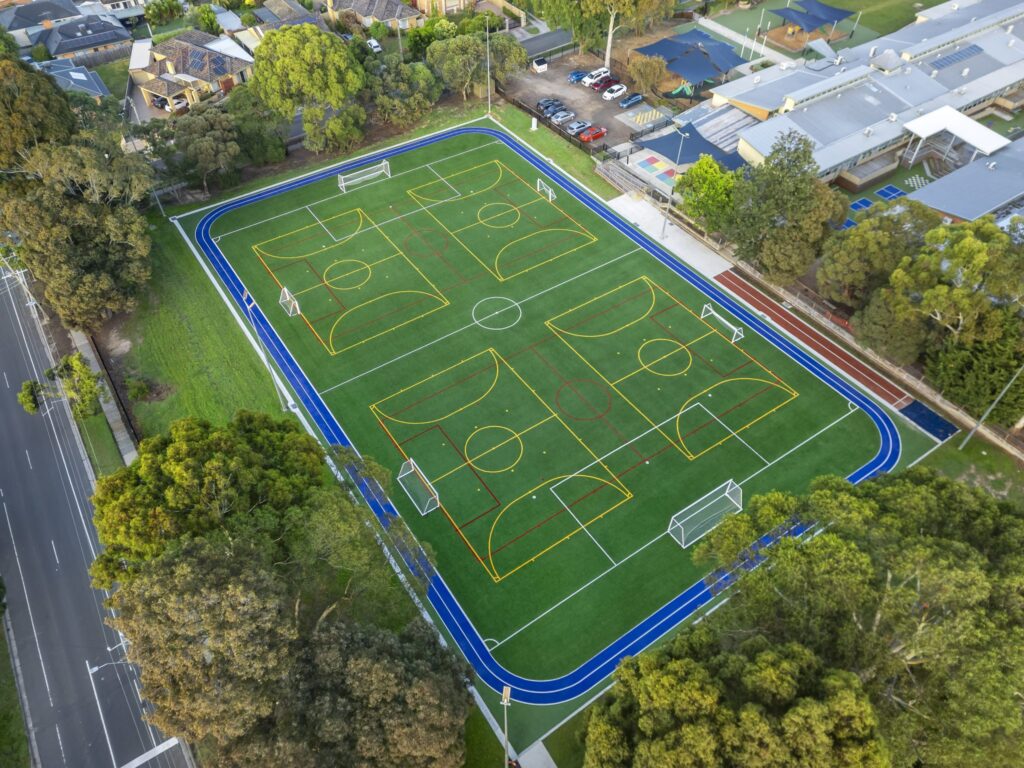
The market is flooded with all types of surfaces for various sports and leisure activities
Each field and court sport has multiple options available. Let’s take a closer look at two of the most popular choices.
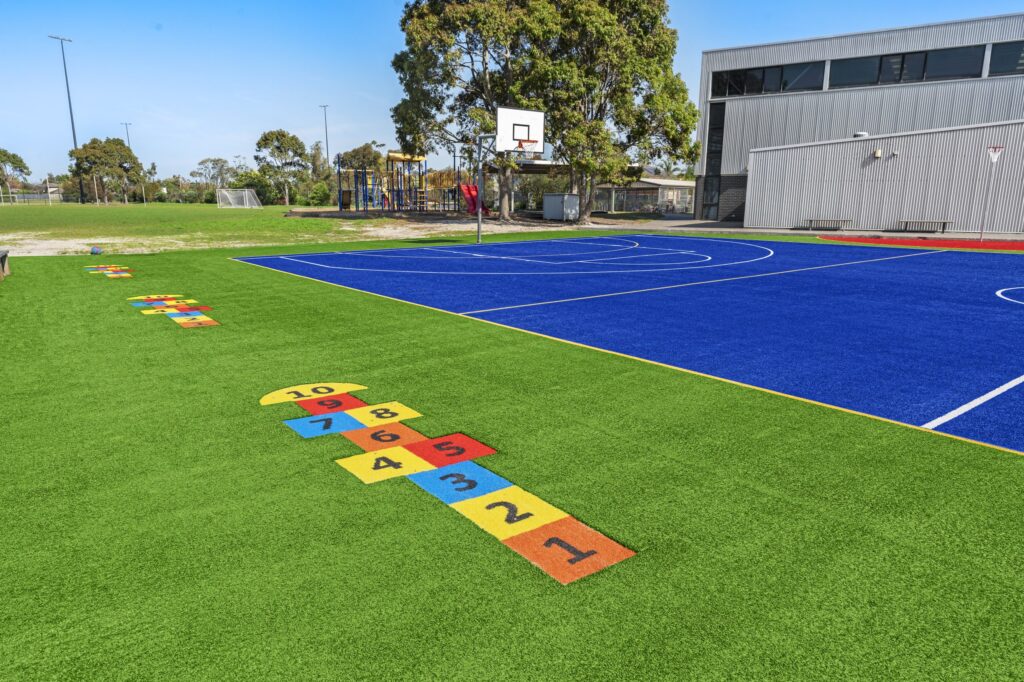
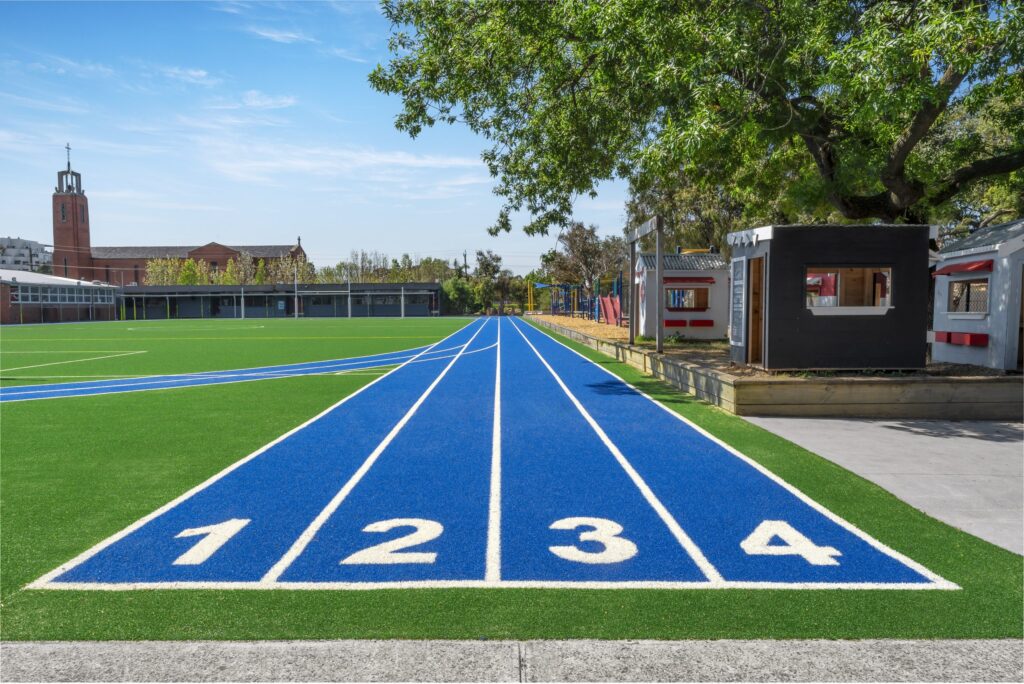
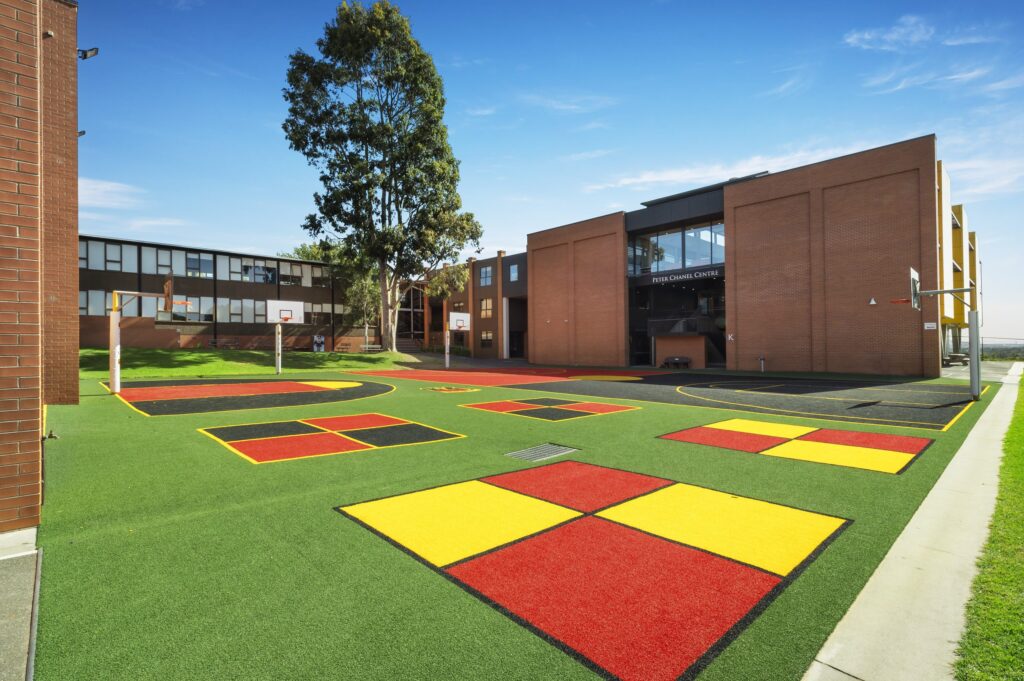
Synthetic grass
- Visually vibrant and colourful
- Highly durable and hard-wearing
- Softens impact, more forgiving on the body
- Can be permanently or temporarily line-marked
- Can be installed in almost any weather conditions
- Can be laid over damaged or uneven subgrades (such as asphalt, concrete, or crushed rock)
- Compliant with peak sporting bodies for soccer, hockey, tennis, netball, volleyball, badminton, rugby, and more
- Performs well in all but the worst weather conditions
- Dries quickly after rain
- However, synthetic grass can be expensive, and while it requires less maintenance than natural grass, it is not entirely maintenance-free.
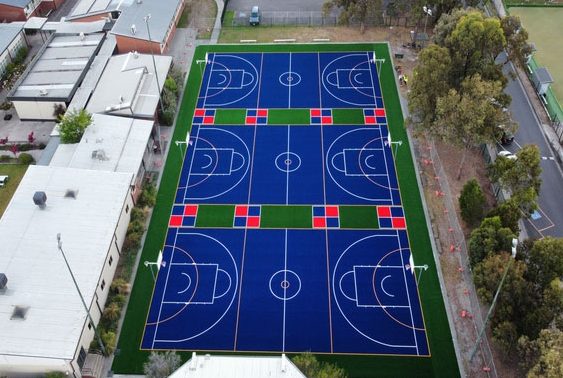
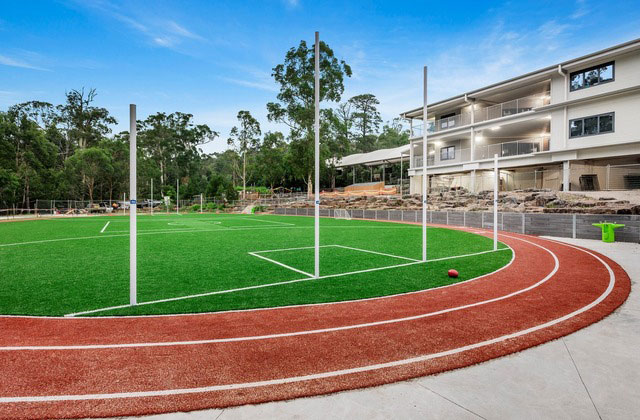
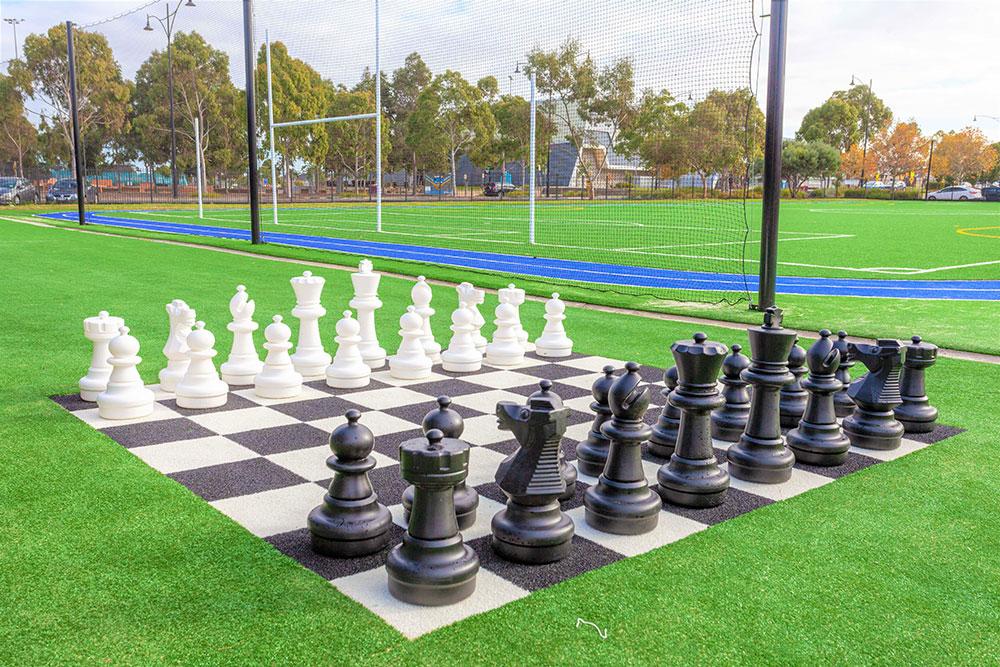
Acrylic or painted surfaces
- Colourful and visually appealing
- Extremely durable
- While these surfaces can be hard to play on, there are cushioned configurations available that are much more forgiving (though at a higher cost)
- Compliant with peak sporting bodies for tennis, basketball, netball, pickleball, volleyball, and badminton
- Generally less expensive than synthetic grass surfaces
- Must be installed on a new or high-quality subgrade like asphalt or concrete
- In some states (Victoria and Tasmania), these surfaces can only be applied during the autumn, summer, and spring months, while in northern states, they are unsuitable for installation during wetter periods
- Virtually no maintenance required except for general upkeep and occasional pressure washing
- Other painted surfaces, such as polyurethane indoor courts, are cushioned and softer, but they are considerably more expensive than acrylic options
- These surfaces can transform a school environment, adding aesthetic appeal while providing high-quality, performance-based sports facilities.
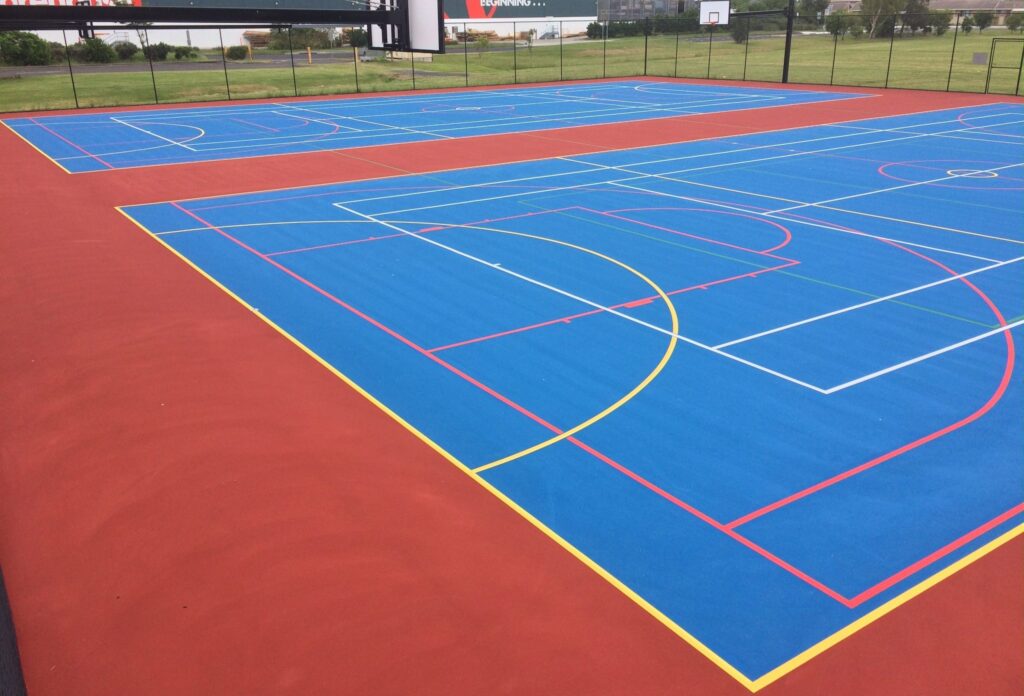
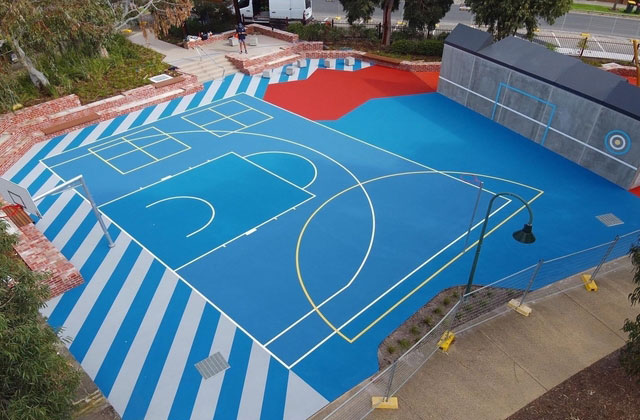
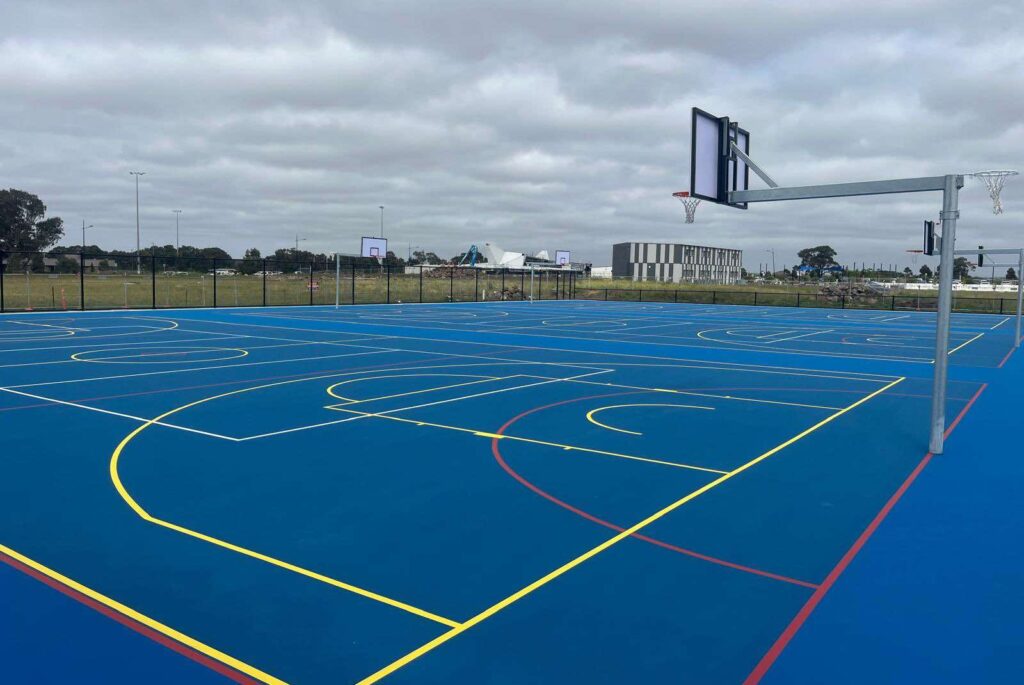
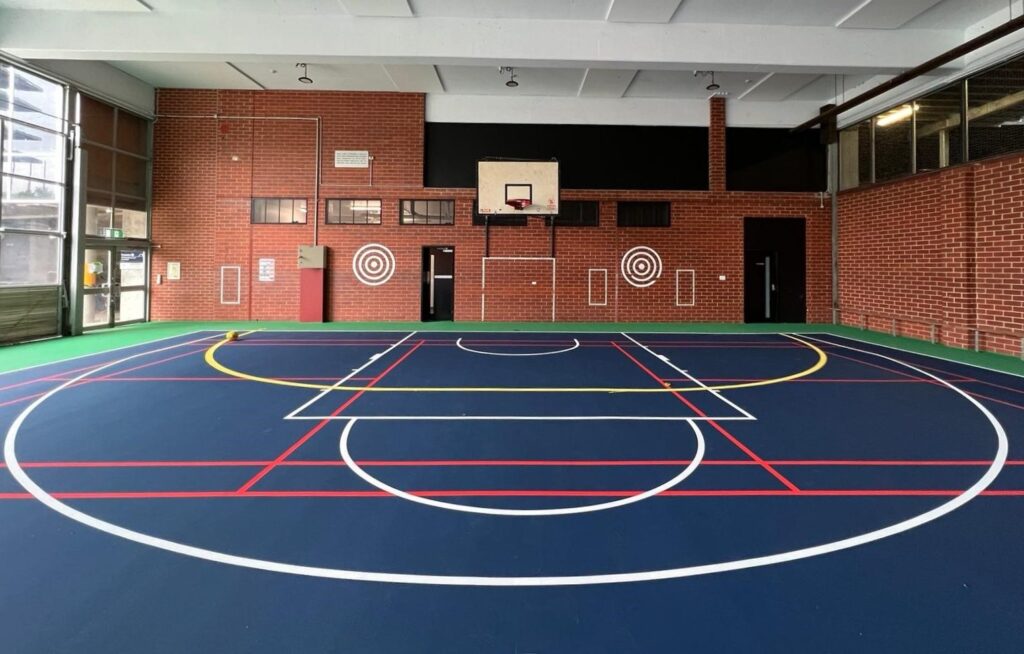
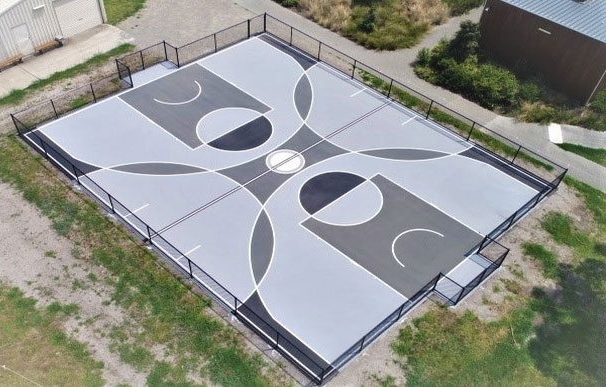
My Conclusion?
In today’s competitive educational environment, investing in high-quality synthetic sports surfaces not only enhances the school’s facilities but also plays a significant role in supporting the physical and mental development of students. Whether it’s synthetic grass or acrylic-painted surfaces, each option offers unique advantages, and selecting the right one can make a substantial difference in both student engagement and long-term maintenance costs.
By providing students with well-designed, safe, and exciting spaces to play and compete, Grassports are helping to foster an environment where they can thrive.
Thank you.
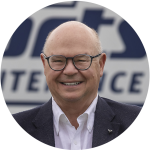
Bernard has been part of Grassports since its conception when his dad formally owned the company, and it was called En Tout Cas. Bernard has seen the artificial surfacing dynamic change over the years, though one thing is constant – our dedication to creating beautiful, safe and high-performance sports surfaces.

